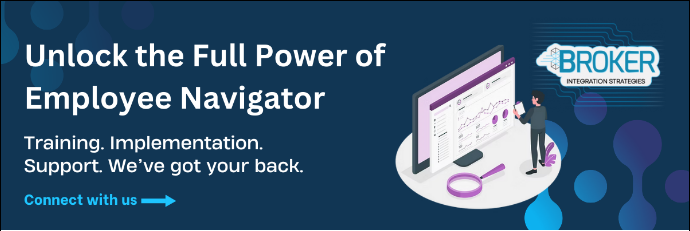Summary
Advisors talk a lot about disrupting healthcare, but real disruption starts with how employers buy. Most buyers resist change because of complexity, distrust, and bad timing. To stand out, brokers must disrupt the buying process by educating months before renewal, earning trust through content and case studies, and guiding buyers with smaller, safer commitments. When buyers choose their advisor first and their plan second, meaningful disruption becomes possible.
Employee benefits advisors love to talk about “disrupting healthcare” or “disrupting the status quo.” And to be fair, much of it is well-founded.
Note – I am using the phrase “disrupting healthcare” in this post because it is such a common claim in the industry. I understand that, with few exceptions, it’s much more of a disruption of the funding of healthcare (i.e., health insurance) than of the care itself.
Brokers are increasingly focused on fixing an undeniably broken system. They’re shifting away from the traditional fully insured plans written through the BUCAs (i.e., health insurance carriers) and exploring more creative, value-based designs that include direct contracting, transparent pharmacy solutions, and innovative funding strategies.
On the surface, this looks like real disruption. Unfortunately, buyers often aren’t ready for it. If the buyer isn’t ready, no disruption takes place.
Why buyers push back
When buyers hear about these new strategies, they often react with hesitation.
- Complexity - the solutions can sound confusing, risky, or too good to be true.
- Credibility gap - the message comes from an industry many employers distrust.
- Timing - these ideas are usually introduced at renewal, the most stressful time of year, when buyers are already buried in plan decisions.
It’s no wonder many employers refuse to make changes, even when the alternative could be better.
The real obstacle: The buying process
Before advisors can disrupt healthcare, they must disrupt the buying process.
In the traditional model, an advisor shows up at renewal looking for a chance to quote, along with the incumbent and who knows how many other hopefuls. They all deliver a predictable spreadsheet followed by an equally predictable capabilities presentation that all look and sound the same.
The employer is already facing a difficult decision about which insurance plan to select. Now, multiple advisors are asking them to make another major decision: fire their current broker and hire someone they hardly know.
Those are two huge, high-stakes decisions at the same time. It’s overwhelming, and most buyers default to inertia and stick with the devil they know.
Start advising before the first meeting
Disruption needs to start long before renewal and long before the first meeting. Employee benefits brokers who want to stand out, especially as disruptors of healthcare, must start advising before they even meet the buyer.
The most effective and disruptive advisors use educational marketing strategies and content as their first sales tool. They provide:
- Blog posts explaining how the current system hides costs, why pharmacy spend is ballooning, or what “value-based insurance design” or “alternative funding” means.
- Short LinkedIn videos breaking down a single concept in under two minutes. For example, “Why self-funding isn’t as scary as you think.”
- Case studies that show real-world results from employers who tried something different.
- Masterclasses that teach, not pitch, such as “Three Hidden Cost Drivers in Your Benefits Plan (and How to Fix Them).”
- Email newsletters that deliver consistent, digestible insights, building familiarity and trust over time.
By providing this kind of content, advisors begin to reshape the buyer’s perspective months before renewal. Employers get used to hearing their voice, absorbing their insights, and seeing them as trusted guides, not “just another broker “throwing a wild pitch at them.
By the time an advisor walks into a first meeting, the buyer already knows their perspective, trusts their expertise, and is open to new solutions. That’s real disruption of healthcare and how buyers engage with advisors. This is also what makes the disruption of healthcare funding possible.
Marketing plants the seeds of trust. Your sales process will determine whether or not those seeds grow.
How to disrupt with small, safe steps
Employee benefits producers can only disrupt the buying process when they deliver a sales process designed to help buyers make the right decision in the right order:
- Choosing their advisor first
- And, with that advisor’s guidance, their plan second.
The right broker doesn’t just place insurance and offer free stuff. They bring compliance expertise, HR support, benefits technology, employee communication, and, yes, a path toward innovative healthcare solutions.
Nobody cares about your solutions until they recognize they have problems that make them necessary.
We coach producers to establish the following Standard up front:
“We understand you already have a benefits advisor. We’re going to be respectful of that relationship. We won’t ask you to end that relationship and start one with us until and unless a couple of things happen during our conversations.
First, it must be clear to both of us that there is an opportunity for meaningful improvement to your overall HR and benefits program.
Second, assuming that opportunity for improvement exists, we must earn your confidence in our ability to fix any problems we identify. We’ll do that by explaining how we’ve solved the same problems for other employers and detailing exactly how we’ll do that for you.”
Serious buyers will find this logical and fair.
A three-step playbook
Once the Standard is set, here’s how to guide buyers through the process:
Step One – Reframe the rules
Explain why the spreadsheet and capabilities presentation game is a commodity. Getting quotes and having access to the right tools is the minimum expectation. Elevate their expectations of an advisor. Show them that real value is in the advisor’s ability to educate, analyze, advise, and drive improved results.
Micro-commitment: Agree to a discovery conversation to establish if/where their current situation could be improved.
Step Two – Diagnose before prescribing
Like a doctor, don’t offer a prescription before diagnosing the patient. Ask questions about HR, compliance, communication, benefits administration, and, yes, plan design. Ask these questions for you and the buyer to uncover what is working and what isn’t.
Micro-commitment: Agree to see what you would recommend as a plan to fix any identified problems.
Step Three – Present your solutions
Explain in detail the solutions you would use to address their identified problems. Prove your effectiveness with case studies and map out an implementation plan.
Micro-commitment: Get the green light to move forward.
Each micro-commitment lowers the perceived risk, builds trust, and moves the buyer forward. By renewal time, the decision to embrace new solutions doesn’t feel like a gamble; it feels like the natural next step.
Another important note. This process should take place months before renewal, when buyers have the headspace and mental calories to think strategically.
Not glamorous, but effective disruption
Advisors love to call themselves disruptors, but real disruption doesn’t start with plan design. It starts with how buyers make decisions.
By educating the market before renewal, reframing the first decision as choosing the right advisor, and guiding buyers through smaller steps, benefits producers can position themselves as advisors rather than vendors.
Brokers don’t disrupt healthcare with spreadsheets or passionate rants. They disrupt it by changing how employers buy. Start there, and true group healthcare disruption becomes possible.
Q4i and Goose can help
We have built an online platform called "Goose: Your Ultimate Wingman" to help you implement these types of growth ideas. In it, you will find the business tools you need to build and maintain an effective sales process: tracking tools, training programs, a peer community, access to coaching, and marketing assistance.
To learn how Goose may help drive your growth in 2026, check out our website at Q4intel.com/goose. Or feel free to connect with or contact me directly on LinkedIn.
Sponsored ad by our Friendor, Broker Integration Strategies. Click above to visit their site.
Content originally published by Q4intelligence
Photo by michaeljung

